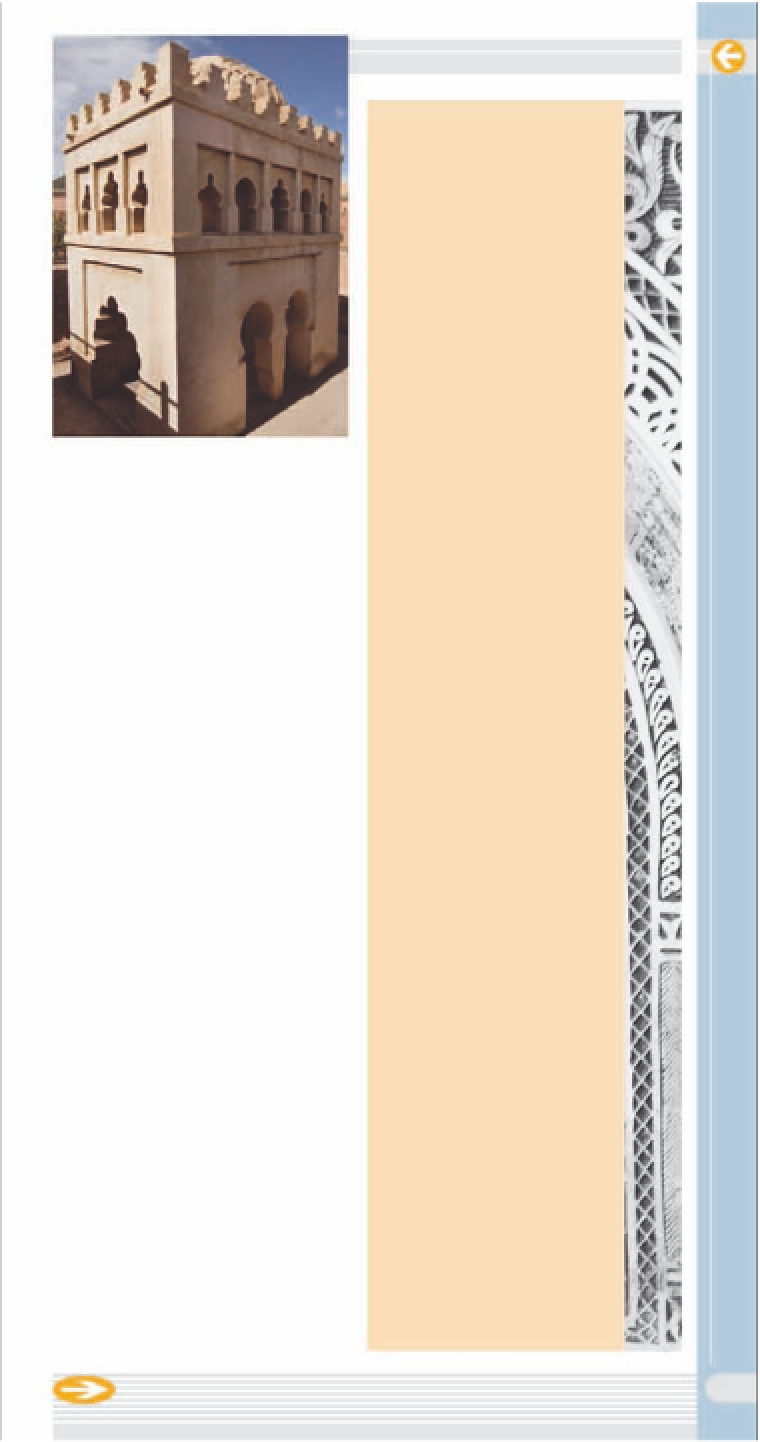Travel Reference
In-Depth Information
Top 10 Historic
Buildings
!
Koubba El Badiyin
The earliest example of
Islamic architecture with
beautiful carved plasterwork
seen nowhere else in
Morocco
(see p68)
.
@
Koutoubia Mosque
The city's biggest and
tallest minaret
(see pp12-13)
.
£
Badii Palace
Its
pisé
walls are in an
advanced state of dilapidation
with clearly visible “pigeon-
holes”
(see pp24-5)
.
$
Bahia Palace
Exterior of Koubba El Badiyin
&
Courtyards
A distinctive feature of
Islamic architecture is its focus
on internal spaces as opposed to
the exterior, where the façades
are generally ordinary window-
less walls. Courtyards serve as
air-wells into which the cool night
air sinks. They also allow women
to venture outside while shield-
ing them from the eyes of
strange men.
*
Fountains
This 19th-century palace
features a riot of
zellij
work
(see p62)
.
%
Medersa Ben Youssef
This structure displays
nearly all the decorative
elements, including fine
zellij
work, superbly carved stucco
and woodwork
(see pp22-3)
.
^
Tin Mal Mosque
Some rare, surviving
carved plasterwork dating to
the early Almohad dynasty
adorns the interiors
(see p90)
.
&
Bab Agnaou
Fountains and basins are
required for ritual ablutions
before prayers. Also, in an arid
climate, the provision of drinking
water is seen as a charitable act.
(
Pisé
This gate into the kasbah
quarter is in the form of a
keyhole arch
(see p18)
.
*
Dar Cherifa
The basic building material
used in Morocco,
pisé
is wet
earth mixed with straw and
gravel pounded between two
parallel boards and strengthened
by lime. If not well made, the
structure can crumble in the rain
- Southern Morocco is littered
with semi-melted buildings.
)
Pigeonholes
Home to a busy cultural
centre, this is an example of a
wealthy courtyard home, with
some extraordinary carved
woodwork
(see p67)
.
(
Dar El Bacha
Enough dazzling multi-
coloured, polychromically-
patterned
zellij
tiling to make
your head spin
(see p69)
.
)
Dar Si Said
For an insight into
architectural techniques and
decoration, visit this museum
(see p63)
.
The numerous pigeonholes
peppering walls in the city are, in
reality, remnants of wooden
scaffolding used to erect walls.
37































